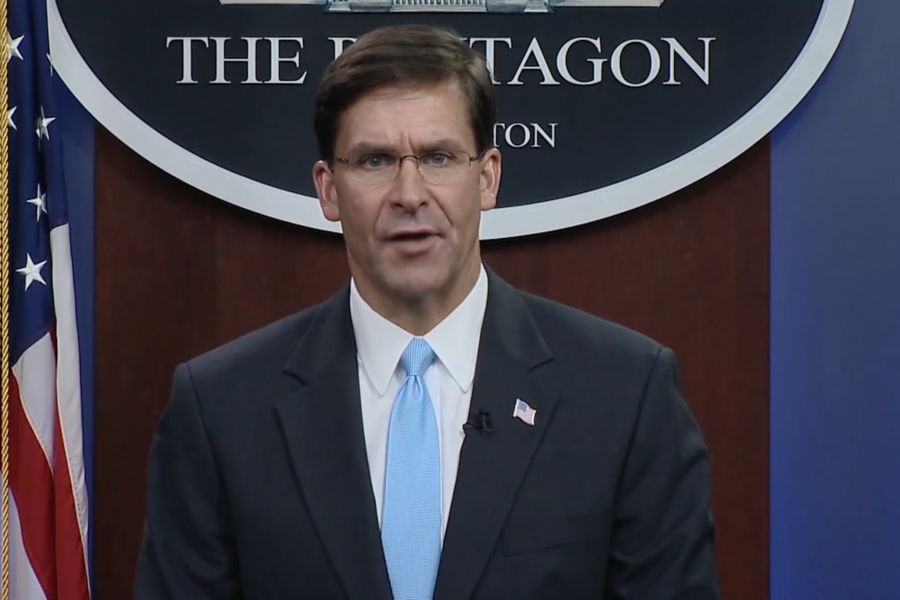The U.S. Air Force is leading the way within the military on adopting new technologies and adapting how it operates to be ready for “great power competition,” both with technological advancements such as the Advanced Battle Management System and new ways to deploy aircraft such as bomber task forces, Defense Secretary Mark T. Esper said.
In a Sept. 16 keynote address as part of AFA’s virtual Air, Space & Cyber Conference, Esper warned that with countries like China and Russia making advancements, “we cannot take for granted the United States’ long-held advantages,” such as air superiority and the ability to operate without threats in space. Rivals “seek to erode our long-standing dominance in airpower through long-range fires, anti-access area denial systems, and other asymmetric capabilities designed to counter our strengths,” Esper said.
That, combined with working to make space a contested environment and constant cyber threats, means there is an “increasingly gray zone of engagement that keeps us in a perpetual state of competition,” Esper said.
The Air Force in recent years is working to get ahead of the curve and modernize, especially with development of the B-21 Raider bomber, the X-37B space plane, and now the Next Generation Air Dominance platform that the service announced Sept. 15 has already taken flight. Coupled with this, the “dynamic force employment” model of sending current aircraft to operate abroad in smaller task forces lets the service show deterrence with aircraft such as the B-1, B-2, and B-52 in small numbers while working to improve readiness at home, Esper said.
“In order to realize the full potential of this and other novel concepts, we must be able to exchange and synchronize information across systems, services, and platforms,” Esper said. “And we must do so seamlessly across all domains.” The Air Force is leading this effort with ABMS, as displayed in recent “on-ramp” exercises.
These advancements require digital modernization, including better protecting cyber capabilities, improving artificial intelligence, and developing 5G. The Air Force is “on the leading edge” of AI, including with its AI Accelerator Program that has been used to speed up the F-15EX acquisition program, Esper said. The service is also conducting 5G experiments to “assess spectrum sharing, improve aircraft mission readiness, and enable air, space, and cyberspace lethality.”
To continue this momentum, the Air Force needs to keep a culture of innovation and risk-taking, Esper said.
“We must make the tough choices required to align our investments with our highest priorities, particularly by shedding legacy systems to advance new capabilities,” Esper said. “In this rapidly changing security environment, we must adapt quickly and outpace our strategic competitors at every turn. In doing so, we will maintain our decisive advantage now and into the future.”
